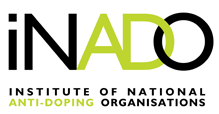1 Apr 2012
The Shepherd's Courage : The Olympic Movement Anti-Doping Code / Janwillem Soek, Emile Vrijman. – (International Sports Law Journal (2002) 1 : p. 6-13)
Content:
1.) Introduction
2.) A comparison
2.1.) The description of the doping offence
2.1.1) The definition of doping
2.1.2) Doping as a petty offence
2.1.3) Intentional doping
3.) Liability
3.1.) Strict liability
3.2.) Culpable liability
3.3.) Liability in case of intentional doping
4.) Sanctions
4.1.) Sanctions in case of a regular or "non-aggravated" doping offence
4.2.) Sanctions in case of an aggravated doping offence
4.3.) Competitors and athletes
4.4.) Sports sanctions
4.5.) No possibility of reinstatement
5.) Conducting doping trials
5.1.) The rights of the accused
5.2.) The position of IOC accredited laboratories in doping tials
5.3.) The relationship between the IOC and the CAS
6.) Conclusion
With the appearance in 1995 of the Medical Code the International Olympic Committee (IOC) for the first time united its hitherto fragmented doping regulations in one comprehensive document. In addition to banning the use of prohibited (classes of ) substances and providing directions and guidelines for carrying out doping controls, the IOC Medical Code further strictly banned the trafficking of prohibited (classes of ) substances, provided further instructions with respect to the accreditation and practices of the so-called “IOC accredited doping control laboratories” and, in case of violation of its provisions, established sanctions for both athletes and their entourage.
Because of its’ comprehensive character, the IOC Medical Code has been the focal point over the past years in the debate within the international sports community concerning the harmonisation of anti-doping rules and regulations. Not surprisingly and not widely publicized, one of the first tangible results of the “World Conference on Doping in Sport” which took place in early 1999, turned out to be a revised Medical Code, the so-called “Olympic Movement Anti-Doping Code”.
The IOC motto “Citius, altius, fortius” does not readily apply to the ADC. On the contrary, compared to the MC and from a legal point of view, it is fair to say that matters have deteriorated rather than
improved, especially where the definition of doping is concerned. It seems as if the IOC wishes to depart from the well established and clear principle of strict liability in doping cases in exchange for a more variable system of incurring liability. It is clear that this does not aid the transparency of the subject matter and will probably cause unnecessary confusion.
Finally, one may wonder if and to what extent the IOC and the international sports governing bodies, in their continuing efforts to protect the positive social values of sports by continuing “strengthening” of their anti-doping rules and regulations, are not in effect violating more general fundamental human rights and principles themselves. This can never be the goal of creating effective antidoping rules and regulations. Nevertheless, it now appears as if every sense of direction and proportion is being lost.
